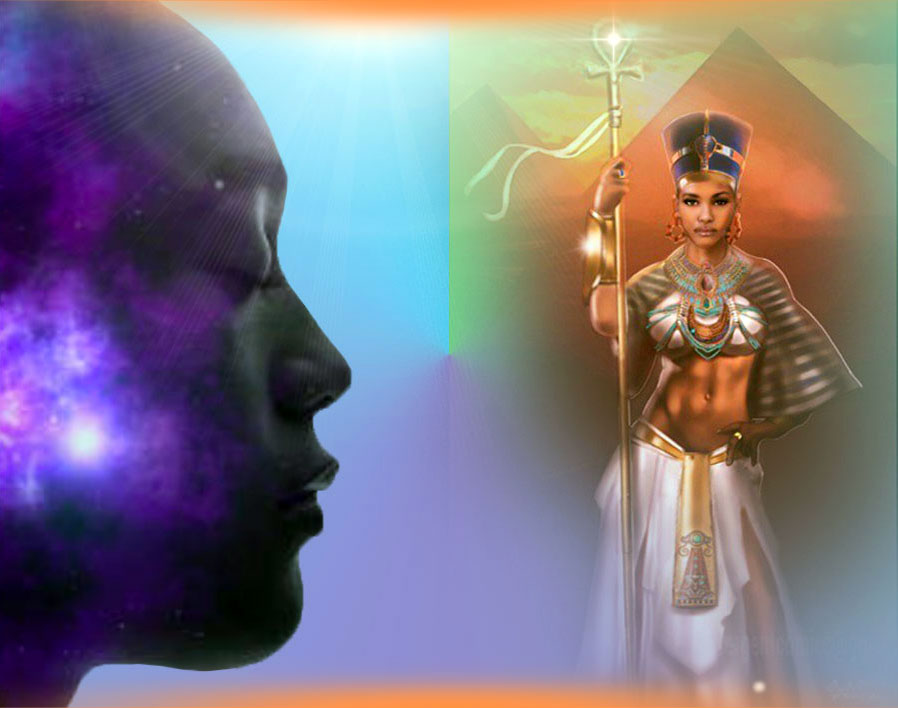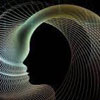Reincarnation: Healing The Soul
 by Roger Wolger, Ph.D.
by Roger Wolger, Ph.D.
Subtle Body Memories: The Etheric Imprint
When we go deeply into a regression, we often have extraordinarily vivid memories of physical pain, contortion, struggle, or dis-empowerment, and we experience all this in a fully embodied consciousness. To feel the phantom pain of having a sword in the side, or of being raped or beheaded, puts us in touch with the deepest level of traumatic residue that has persisted across lifetimes.
Such physical memories often shock us when they surface in a regression, especially when there is nothing to account for them in the current life. The most helpful explanation is that these memories are embedded in the subtle body—literally, the layers of subtle energy that surround and penetrate the physical body. (Some researchers have called it “cellular memory,” but this metaphor unfortunately raises more questions than it answers. The Russian research into the bio-electrical auras around plants, animals, and human bodies, which can be recorded with the technique of Kirlian photography, is more descriptive, speaking of “energy fields” in and around the body, like magnetic fields.) Both past life research and past life therapy have now collected an impressive array of evidence to show that these old traumas, inherited though the subtle body—which I will also call the etheric field or blueprint—consistently re-imprint in the living body as rashes, deformities, birthmarks, weaknesses in certain limbs, or organic disorders such as a weak bladder, a weak heart, gynecological problems, and so on.
Wounds From The Past
The devastating effect of past life physical wounds imprinted on the subtle body at the etheric level cannot be overestimated. It is in many ways the most radical discovery to be made in past life regression work, and it has the potential to revolutionize the way we approach physical healing. Here are some examples of how healing does, in fact, take place when the past life wound is remembered and released in the etheric field:
Sophie had suffered from migraine headaches for many years. During a workshop, she recovered a past life as a young girl in a nineteenth-century mining town out west. Here father, an alcoholic, frequently molested her and brutalized her. On one occasion, she answered him back, and he took an iron bar and hit her over the head, crushing her skull. When Sophie relived this horrible death, she felt a brief “splitting headache” as the bar cracked open her skull. Then she was beyond the body, looking down at it and at her now remorseful father. As her spirit moved away from the dreadful scene, she felt a huge lifting of energy from around her head. From that day on, her migraines never recurred.
Pedro suffered from chronically stiff shoulders and a very tight back that no amount of chiropractic or bodywork ever seemed to relieve. In a regression to a prehistoric past life as a South American peasant, he found himself captive to an ancient priestly tribe that was using most of his tribe for slave labor to build temples and pyramids. He suffered many years of hardship, carrying heavy basket-loads of rocks up the slopes. He was forever under the eyes of overseers, who viciously lashed any slaves who stumbled or slowed in their work. One day his body gave out and he collapsed, partly paralyzed, with compacted spinal vertebrae, never to work again. Left to starve, he died bitterly, in terrible back and shoulder pain. But once his spirit reached the bardo, he could look down and see his body and know that he no longer had to do that literally backbreaking work. After a healing psychodrama in which he simulated pushing a heavy weight off his back, Pedro reported that his shoulders and back felt totally different. The pains did not return.
Flavio suffered from chronic arthritic pain in his hips and right leg. Although much of the pain was around the joints, he also reported that his right leg was always tense from the knee to the hip. Rather than try to detach him from his pain, as many therapies do, I took the approach of allowing the painful leg to produce a story by exaggerating the tension. Flavio quickly saw himself as a navy man in the eighteenth century whose ship was being bombarded. His lower right leg had been shattered by a cannonball, and the ship’s surgeon was amputating it above the knee. Two strong sailors held him down as he screamed in agony. This was the tension causing the terrible pain in his right leg and hips: he was trying with all his might to pull his leg away from the surgeon’s saw.
He died not long after from massive blood loss and trauma, but his body struggled to the very last. When Flavio saw himself above the ship and the sea battle, he was by no means out of the story; his body still trembled with the phantom pain.
In the workshop psychodrama, I had three strong men role-play the surgeon and his helpers. The tension immediately redoubled as they held Flavio down.
“They’re taking my leg!” he screamed.
I asked him, “What is your body trying to do?”
“I’m trying to hold onto my leg!”
I let him pull and pull to experience the extent of his fight to hold on. Then I instructed the role-players to let go, so that Flavio could pull his leg away from them. In doing this, he collapsed, exhausted. All the tension was gone. “Look,” I said, “you haven’t lost your leg today; it’s still here!” But he had needed to complete that huge unfinished battle to save his leg: an old struggle that had been locked in his leg and hip muscles by the etheric imprint of that awful death.
Recognizing And Clearing Etheric Wounds
Healing of physical/etheric trauma takes place in the bardo through detaching from the old scene—knowing that it is over, deciding to let go—and using a variety of spiritual or imagined strategies to reorganize the subtle body itself. In Pedro’s and Flavio’s cases, a psychodrama of having the load removed or the leg reclaimed was enough to transform the frozen residue of pain for both of them; it erased the old program, the old tape that had been running in their unconscious minds and bodies.
There is a second type of psychodrama that can be useful for healing deep etheric wounding. Many people who die severely wounded in a past life death find themselves conducted by spirit helpers in the bardo realm to a sort of spiritual hospital, where they receive various forms of healing, often entailing light. Sometimes a spirit animal will come to suck out poison, clean a wound, or strengthen an area of the subtle body with some of its own energy. (Healing of this kind is well known among traditional shamans, many of whom talk of working with the luminous body; the knowledge that healing can take place in the subtle or luminous body is axiomatic to them.) Similarly, in regression healing in the bardo, we can often help replace severed heads, severed limbs, or burnt skin, or close gaping wounds using transfusions of light administered by spirit healers and spirit animals. The spiritual imagination has tremendous power to heal in these higher realms, or bardos, which vibrate at a higher frequency than the material world.
Rosanna’s Spirit Healing
Rosanna suffered from various gynecological problems and a difficult history of childbearing; each of her pregnancies had been fraught with complications that led to Caesarian deliveries. While she loved having children, being pregnant had been a series of nightmares for her every time. She wanted another child, and so did her husband, but not with so much pain around the process. When she did some past life sessions, she saw herself in more than one life dying in childbirth—scenarios that, in themselves, left her with a lot of fear—but the worst memory was of a pregnant woman whose child was taken from her for a ritual sacrifice. So cruel was this society that they cut the child out of her before she came to term. This was the deepest and most painful imprint she was carrying, and it was clearly associated with her repeated Caesarians.
In the regressions, at first Rosanna went out-of-body at the death scene, which was all too understandable, but when she finally relived the death in the body, she felt how deeply she had held tension and terror in her abdomen all her life, and how it underlay her problems in that part of her body today. When she went to the spirit world, a loving group of ancestors—the Grandmothers, I will call them—came to meet her. Her lost baby was there, and she was tearfully reunited with him. Then the Grandmothers took her to a sacred waterfall, where they healed her subtle body by sewing up her mutilated belly and cleansing her pelvic and genital wounds. All the while, they gently sang to her their ancient tribal songs.
The Many Masks Of The Soul
The more we work with our past lives, the more we come to see that we carry within ourselves a whole cast of characters—a set of selves that one Jungian writer, Jolande Jacobi, has called the “masks of the soul.” To become fully human is to recognize, and even to experience, extremes of our nature that can range from sublime heroic heights to the depths of depravity.
To grow morally and spiritually, we must see that we have in us both the hero and the villain, the seductress as well as the saint; that both creator and destroyer, tyrant and exile are part of our soul’s repertoire. We must learn to see our own shadow. As Carl Jung put it, “We do not become enlightened by imagining beings of light, but by making the darkness conscious.”
When our past life explorations bring to light a difficult past life, a shadow life, we may want to reject or suppress it, especially if it does not sit comfortably with the more favorable image we have of ourselves. But if we can find a way to live with this unpleasant “other,” there eventually arises within us a kind of creative tension between the opposing selves. “Without contraries is no progression,” wrote William Blake, and the same is true in the soul: painful as this tension may be, it sets in motion a spiritual dynamic through which the soul can grow into its higher potential for love and compassion.
Now that you have begun to record and review your own past life stories, you may notice how the theme of one life often reverses itself in another life in a play of psychological opposites. You might recall a past life as a peasant in a village ravaged by brutal warlords, then in the next life find yourself a ruthless Conquistador invading, raping, and pillaging. It is as though your soul has role-reversed from powerless victim to powerful aggressor.
From all of the cases of regression I and my coworkers have recorded, it is clear that the twin poles of any archetypal complex—as in this case, of power—do, indeed, reverse themselves in this way, swinging across lifetimes like a pendulum from one extreme to the other. This dynamic of action and reaction is, of course, what Eastern teachings call karma. In remembering our past lives, we experience firsthand how the karma we carry today was originally laid down and transmitted through various lives. We might see, for instance, how our difficulty making money today arises from a life where we squandered a lot of money and died guiltily blaming ourselves, saying, “I never should have had all that money! It didn’t make me happy.”
From Proconsul to Peasant
Scepter and crown
Must tumble down
And in the dust be equal made
With the poor crooked scythe and spade
~ James Shirley
Guy was a typical example of how, in regression work, extreme polarities that are in conflict within the soul manifest in life after life, compensating (or over-compensating) for each other. Though he had a pronounced tendency to arrogance in his present life, Guy never rose very high in the ranks of the corporation where he worked for many years. He seemed unaccountably held back, despite grandiose—though not impractical—visions of how he would run the firm if it ever fell to him.
Then, in a major regression session, Guy had a memory of being Proconsul of Spain in Roman times—pretty much the dictator of Spain on behalf of the Roman Empire. He had power over the whole of that territory, and was answerable only to the emperor. There was a sense of grandeur and vastness in this life of Guy’s. He was a big man physically, and he had enormous power, with thousands of subordinates, legions of soldiers, and a whole political structure beneath him. But in the next life he recalled, he found himself as a peasant in medieval Holland, living in a tiny shack on a tiny plot of land, barely twenty feet by twenty. He spent that whole life in his little village, scratching out a living in the most wretched of circumstances, with a few chickens and a pig. He had gone from one extreme of power and control over vast territories to the opposite extreme of restriction and limitation. Guy’s soul needed to experience those opposites as part of a long lesson in humility.
Other stories from my case files show the same dynamic at work:
Ramona remembered the painful past life experience of being raped by soldiers on a battlefield. She was powerless and humiliated, and she died extremely angry. Her dying thought was, “I’ll never let this happen to me again. I want to kill them.” In the next lifetime she flashed upon, she saw herself dressed in rough clothes and leather and metal armor. She was a warrior, in fact a Viking, invading villages in the north of Europe, killing and raping. She had reversed from the victim to the perpetrator, and she was making sure it never happened again—to the Viking, at least. Recognizing this progression helped Ramona see how angry she was at men in her present life and how heavily defended–armored—she was in her body.
Dagoberto saw himself as a Jewish victim of the Inquisition, deeply humiliated, then tortured to death as a heretic. Then he saw himself returning in a subsequent lifetime to be a powerful judge in a small German town, where he had the power to condemn people to death, torture, and other cruel punishments. In this progression, he saw the source of the deep compassion he feels today for all victims of persecution, but he also recognized a judgmental side in his present personality—for example, toward Arab suicide bombings of the Jews in Israel.
Helga, who had undergone open-heart surgery not long ago previously in this life, saw herself in a past life as a priest in South American culture. The priest’s job was to sacrifice children, and it was done by cutting out their hearts. The inescapable connection with her own surgery led to a catharsis. Helga realized that she had been unconsciously carrying enormous guilt form the priest’s life, and that despite all the selfless work she had been doing with very sick and dying children as a nurse in a children’s hospital, she had never been able to lay it to rest. She had actually brought on her heart condition by overwork, precipitating what turned into a felicitous healing crisis.
Integrating And Healing Your Past Life Selves
When we start to integrate a pair of opposing life stories, either by reviewing them in the bardo or by reflecting on them over time, we begin a major spiritual work. By bringing to consciousness that part of the soul that lays unfinished in your previous life or death, we infuse it with fresh energy, so we can embrace life with a newer and wiser perspective. A wounded part of the soul is healed; a lost, prodigal part is found. As our practice of past life remembering progresses, we may discover different levels of understanding at different stages of the journey. The work can extend over many years, becoming what Jung called the opus magnum, the true alchemical transformation of the soul.
On an energetic level, if we can get deeply in touch with emotions and sensations that arise when we remember our past lives, we can also bring the emotional and physical energies within the subtle body back into balance. By working consciously on scars from past life wounds, and by unfreezing memories locked in fearful places in our present bodies, we can promote the release of strong “streams” of energy in our subtle bodies. Chronic areas of stiffness my dissolve as we let go of physical and emotional burdens we have been carrying from past lives, no longer relevant to our current life. Blocked libido may begin to flow naturally again as we let go of old bitterness and resentment that has been blocking our ability to give ourselves freely and passionately to another—the result of betrayal or abuse in a previous life.
On a psychological level, equally important healing takes place when we recognize the patterns of self-blame, self-limitation, vengeance, shame, or self-criticism we have been harboring from our past life stories. We come to see these patterns as bitter but deeply human reactions from painful past lives—lives where we did appalling things, made shameful decisions, or wretchedly failed our fellow beings. When we face these stories honestly and openly, seeing them in the human context in which they arose, then we can entertain them compassionately and let them go. We recognize that our past lives are precisely that: past. And we find that we have it in us not only to forgive others, but ultimately to forgive our (other) selves.
When we rework memories of dying in previous lives, we have a second chance to erase that psychic residue from the karmic slate. Sogyal Rinpoche teaches that birth and death are cyclical process, all part of the endless transformations of Universal Mind. Once we understand this—and once we remember our soul’s past “intensely and comprehensively,” in Shelley’s words—we can start to let the ever-flowing river of being wash away the negative accretions of our lower, self-ridden nature. Through this process of purification, our energy fields become lighter, less dense, as we shed the karmic residues and psychic debris we have carried for lifetimes.
The great teachers tell us, too, that if we can relinquish our attachment to the whole business of personality—in this life and across many lives—our ego will eventually be stripped of all its paralyzing obsessions and delusions. Such a practice of “self-naughting,” the mystics say, marks the beginning of the soul’s ultimate journey to know the Divine. Then we come to see that all these characters, all these stories that we carry from our past lives, are nothing more than the masks of the soul, cast away when the drama ends. When we see this, we are ready to do as Rumi says:
Renounce all the faces in your heart,
So that the face without the face may come to you.
Excerpt from Healing Your Past Lives
Posted in Other Topics, Past Life Therapy, Reincarnationwith comments disabled.





